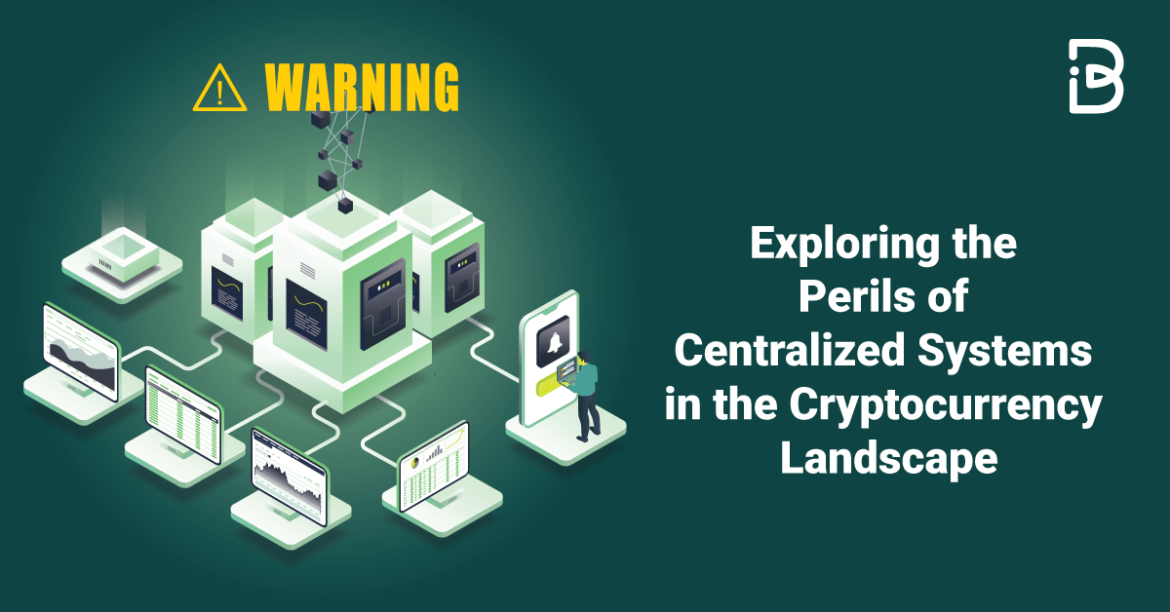The crypto industry, known for its promise of decentralization and autonomy, faces an endless challenge: the centralization risks. While the ethos of decentralization penetrates the crypto landscape, recent events have underscored the nuanced interplay between centralization and decentralization.
In this blog, we will delve into the intricate web of centralization risks within the crypto ecosystem, exploring their origins, implications, and potential mitigations.
Exploring Centralization in Crypto
Table of Contents
Centralization in the crypto realm stems from concentrated points in the technological infrastructure, creating vulnerabilities and choke points. From limited internet service providers to dominant mining operations and centralized node hosting services, various components contribute to centralization.
These centralized structures not only compromise the ethos of decentralization but also pose inherent risks to the integrity and security of blockchain networks. Moreover, centralization can facilitate censorship, both strong and weak, undermining the fundamental principles of blockchain technology.
Well, as we are now aware of what is centralization in the crypto space, it’s time to look into the types of centralization risks.
Types of Centralization Risks
A comprehensive study identifies distinct vectors of centralization risks, illuminating the multifaceted nature of centralization within blockchain ecosystems.
These vectors encompass governance, consensus mechanisms, motivational factors, topological vulnerabilities, network dispersion, and software dependencies.
Each risk factor represents a potential Achilles’ heel for blockchain networks, highlighting the complex interplay between technical architecture and decentralization goals.
Let’s move into knowing the benefits of centralization risks.
Advantages of Centralized Networks
- Swift Deployment: Centralized networks facilitate rapid deployment due to well-defined command chains and simplified network delegation.
- Cost Efficiency: Centralization reduces operational costs by streamlining network management and support requirements.
- Consistency: A top-down approach ensures standardized interactions between the central server and client nodes, enhancing end-user experience consistency.
Every coin has two sides and so let’s understand the cons of centralization risks.
Disadvantages of Centralized Networks
- Single Point of Failure: Centralized systems are susceptible to complete shutdown in the event of primary server failure, resulting in service disruptions and compromised reliability.
- Trust Factor: Despite perceived safety, centralized organizations may encounter trust issues due to vulnerabilities in centralized databases.
- Scalability Challenges: Scaling centralized systems beyond a certain threshold is arduous and may lead to information bottlenecks, impacting network performance and user experience.
Besides, these disadvantages, centralization risks also pose certain vulnerabilities in the crypto space which we’ll be addressing below.
Centralization Risk: A Looming Concern
Centralization risks pose vulnerabilities exploited by unethical project developers and external attackers. Attacks such as rug pulls, and minting exploits capitalize on centralized contract ownership, undermining network integrity and user trust.
In rug pull scenarios, project founders or external actors leverage centralized control to manipulate token liquidity or siphon funds from locked contracts, perpetuating financial losses and eroding investor confidence.
Below are some real-life examples of how centralization risk have impacted the crypto ecosystem.
Case Studies: Ethereum and Bitcoin
The examination of Ethereum unveils a myriad of centralization risks inherent in its ecosystem. Consensus centrality, epitomized by the concentration of staked ETH among a few entities such as Lido and major centralized exchanges, poses a significant threat to Ethereum’s decentralization aspirations.
Moreover, the rise of Miner Extractable Value (MEV) and its implications for transaction censorship underscore the challenges of maintaining decentralization in Ethereum’s mining landscape. Similarly, Bitcoin, often lauded for its decentralized architecture, grapples with its centralization risks.
The concentration of hash power among a handful of mining pools, coupled with dominant internet service providers and ASIC manufacturers, highlights the vulnerability of Bitcoin’s network to centralization pressures. Despite Bitcoin’s resilient security model, the specter of centralization looms large, necessitating proactive measures to safeguard its decentralization ethos.
Centralization Risk in Layer-One Chains and DeFi
Layer-one chains such as BNB Chain and Solana face persistent scrutiny regarding their decentralization credentials. The limited number of validators in BNB Chain and Solana’s hardware-intensive blockchain architecture has raised concerns among crypto purists.
While these chains tout decentralization as an ongoing process, skeptics remain wary of their centralized tendencies, urging developers to prioritize decentralization efforts.
In the realm of decentralized finance (DeFi), centralization risks manifest through governance control and vulnerability exploits. The recent Wormhole hack serves as a stark reminder of the vulnerabilities inherent in DeFi protocols, with a single entity gaining control over a significant portion of the network.
Centralized interventions, such as court-ordered asset recovery in the aftermath of hacks, highlight the complex interplay between decentralization ideals and pragmatic solutions to security breaches.
Conclusion
Centralization risks pervade the crypto landscape, posing formidable challenges to the industry’s decentralization aspirations. While centralization isn’t inherently detrimental, its unchecked proliferation can compromise the integrity and resilience of blockchain networks.
By fostering transparency, promoting network diversity, and embracing decentralized governance models, stakeholders can mitigate centralization risks while harnessing the transformative potential of blockchain technology.
In navigating the decentralization dilemma, the crypto community must remain vigilant, adaptable, and committed to the principles of decentralization as a cornerstone of blockchain innovation.

